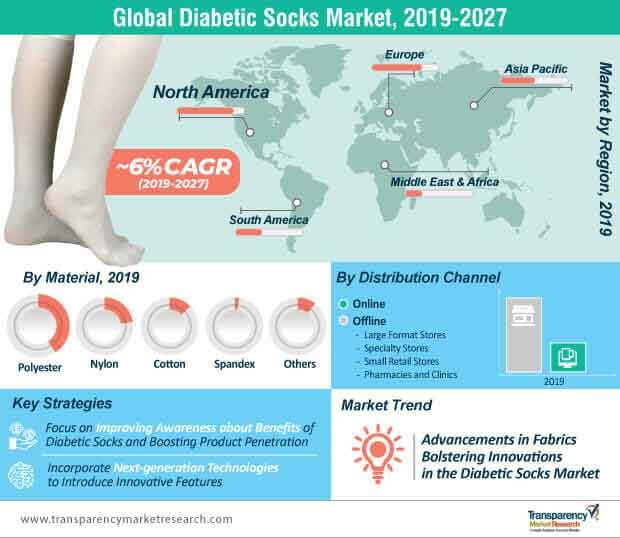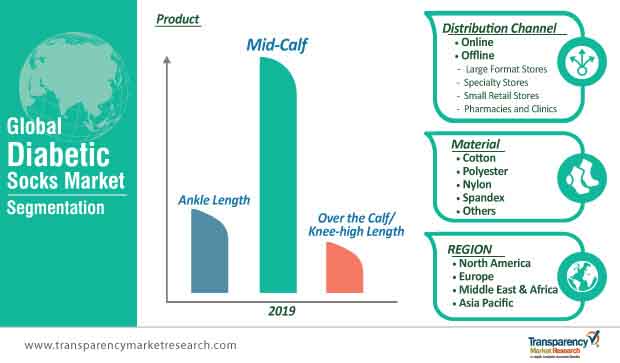
Recent studies have found that, the number of patients suffering from diabetes across the world has increased over 4X in the last 35 years, making it one of the top ten causes of deaths in 2016. A recent study by CDC (Centers for Disease Control) also found that, at least 1 in 7 Americans has diabetes, indicating a substantial high prevalence of the disease in the leading economy of the world.
A recent study by Transparency Market Research (TMR) indicates a potential rise of 45% in the diabetic population, between 20 and 79 years, during 2017-2045, among which, 70% of the patients will belong to the age group of 20-64 years. This translates into the fact that, the younger generation is showing more pre-disposition towards the disease. This alarming and rapid prevalence of the disease, over the next few decades, looms large as a global pandemic, and serves as a wake-up call to medical functionaries at the helm of affairs.
The gargantuan spectrum of disease complications associated with diabetes is shape shifting the way consumers are embracing diabetic socks, not just as a therapeutic clothing, but also as a modern medical accessory. With top manufacturers pitted against each other for therapeutic accessories, diabetic socks are gaining popularity owing to their preventive and non-invasive features.
Coupled with cost-effectiveness, increased health-consciousness among the younger generation will complement the growth of the diabetic socks market in the coming years. In addition, rapid technological proliferation will also have a significant share in the rise of its valuation from ~ US$ 140 million in 2018 to a forecast value of ~ US$ 225 million by 2027.

Planning to lay down future strategy? Perfect your plan with our report brochure here
Technological Innovations and Inclination towards Non-invasive Treatment Impart a New Lease of Life
Several non-surgical methodologies coupled with self-care treatments associated with podiatric assessment, nail health, and supportive footwear are gaining immense preference from diabetic patients around the world. One of the most recent innovations has been the embedding of silver nanoparticles in the entire volume of the diabetic sock yarn.
In-depth studies conducted by several researchers have established the effectiveness of silver Nano particles measuring 1-100 nm in preventing the pathogenesis of virulent strains of Pseudomonas, E-Coli, Streptococcus, and Staphylococcus among diabetic patients. Harnessing the power of sophisticated technological interventions such as this can garner strategic victories for diabetic sock manufacturers, thus bolstering the growth of the industry.
In addition, the complex and virulent pathology associated with diabetic neuropathy has health ramifications, and pose a serious economic drain on both, developed and developing economies. Hence, a paradigm shift in its evolution with cutting-edge technological solutions is offering timely succor to millions affected by the disease. For instance, micro-fabricated pressure sensors found in the yarn and linked to smartphones give timely warnings to sufferers of an impending risk. It gives patients an upper hand in preventing foot complications, thus reducing healthcare costs related to diabetes, and this will influence the emerging trends in the diabetic socks market.
Furthermore, diabetic socks comprising gel padding are emerging as a favored option, not only for protecting the feet from injuries, but also for reducing sensitivity and irritation. The escalated demand for diabetic socks having gel padding can be seen as an emerging trend, which will have a cascading effect on the growth of the diabetic socks market during the forecast period of 2019-2027.
Offline Distribution Channels Generate Three-fourth Market Revenue
Distribution channel trends in the diabetic socks market underscore an increased inclination of consumers towards purchasing products from offline stores. TMR’s study on the diabetic socks market finds that, offline distribution channels such as large format stores, pharmacies and clinics, specialty stores, and small retail stores accounted for ~ 73% share of the global revenue in 2018.
The emergence of newer cutting-edge technologies is slowly bringing to the fore a highly revolutionized customer channel that uses direct-to-consumer shipping. Direct-to-consumer shipping enables products such as diabetic socks to not only have a unique selling proposition but also allows stakeholders to take care of their most valuable assets – customers. Improving customer relationships via the direct-to-consumer sales channel trend can help key market players leverage this and exponentially increase their revenue margins.
While the importance of offline distribution channels remains untouched in the diabetic socks market, the rise of the e-Commerce industry is expected to change the dynamics of the market in the coming years. Consumers, especially in developed regions such as North America and Europe, are showing a shift in purchasing trends, with increased shipments of diabetic socks purchased through online distribution channels. Consequently, leading players in the diabetic socks landscape are likely join forces with online distribution channels such as Amazon, Walmart, Sockswholesale.com, and others, to reach a larger consumers base and boost their profitable sales, worldwide.

Want to know the obstructions to your company’s growth in future? Request a PDF sample here
Customized Solutions: A Winning Business Strategy for Diabetic Sock Manufacturers
With declining revenues for standardized or poorly-fitted socks arousing concerns among manufacturers, diabetic socks in customized sizes would spell extended comfort to a happy customer. While ill-fitted socks may spell doom and be the causative factor behind declining revenues, inadequate reimbursement options in the diabetic socks market could also hamper market growth. Customized diabetic socks with all the essential attributes of comfort, convenience, and specific medical features are likely to grow high in demand, triggering manufacturers to capitalize on this trend in the coming years.
Many diabetic socks manufacturers are expected to focus on introducing tailor-made and custom-fit diabetic socks to meet the specific medical requirements of diabetic patients, which, in turn, would reflect positively on the development of the global diabetic socks market. Key market players can revel in the fact that, innovative products such as customized socks can positively influence their brand identity, which can help them create a stronger position in this landscape.
Analysis of the Competitive Landscape of the Diabetic Socks Market
The competitive landscape of the diabetic socks market is witnessing a flurry of activity, with companies facing intense competition from local manufacturers. A significantly high number of emerging stakeholders and players in the diabetic socks market will continue to prove to be a threat for well-established brands, with their cost-effective products with innovative fabrics that are selling faster in this landscape.
Read TMR Research Methodology at: https://www.transparencymarketresearch.com/methodology.html
Emerging players are also adopting technologies to introduce innovative features of diabetic socks, to reach diabetic patients with specific health conditions. For instance, in March 2018, Siren – a California-based start-up in the diabetic socks market – announced that it had launched its first product – diabetic socks – using its proprietary Neurofabric material along with a foot monitoring system, which can be connected to an app that alerts early warning signs of inflammation, and subsequently, diabetic foot ulcers. The company also declared that, with this launch, it is targeting diabetic patients who have foot ulcers.
Read Our Latest Press Release:
- https://www.prnewswire.com/news-releases/affordability-and-beneficial-properties-to-serve-as-vital-growth-factors-for-construction-tape-market-during-forecast-period-of-2020-2030-tmr-301221294.html
- https://www.prnewswire.com/news-releases/global-higher-education-solutions-market-to-thrive-on-growing-popularity-of-cloud-computing-and-high-consumption-of-digital-content-tmr-301219732.html





